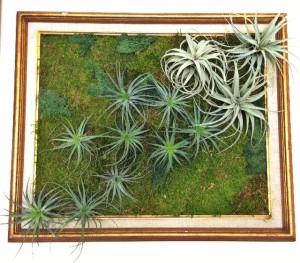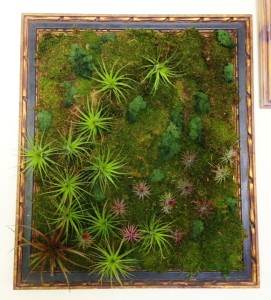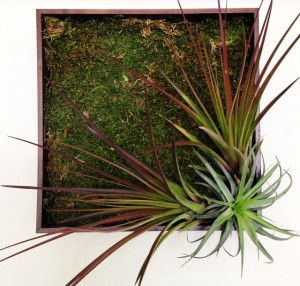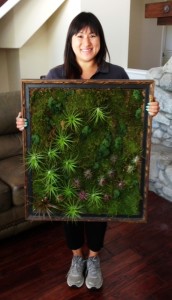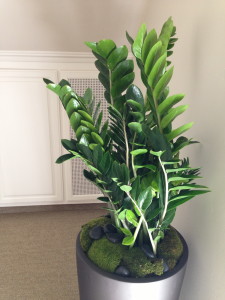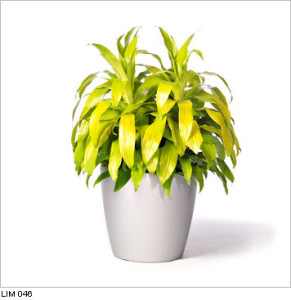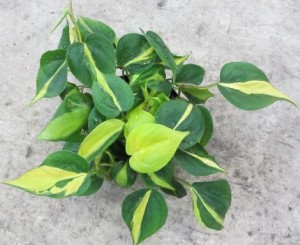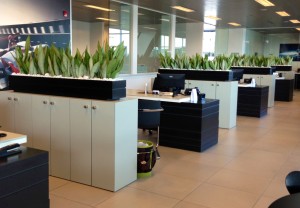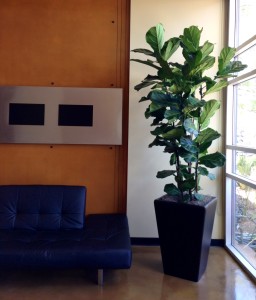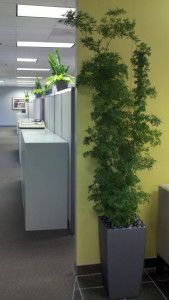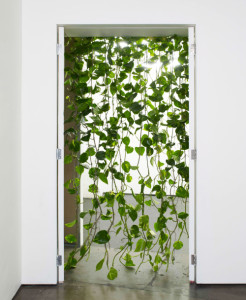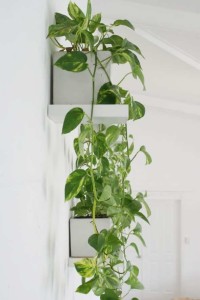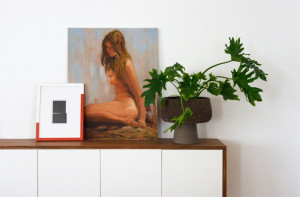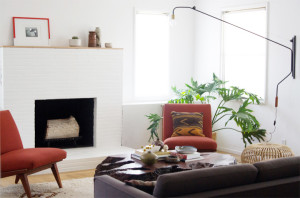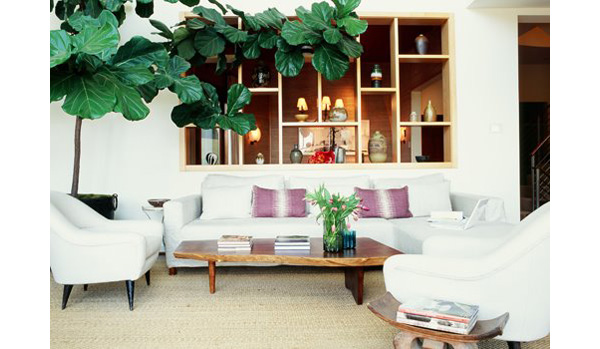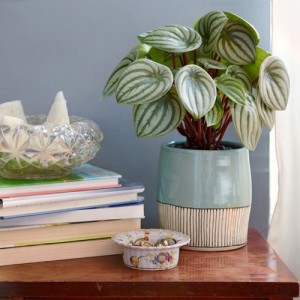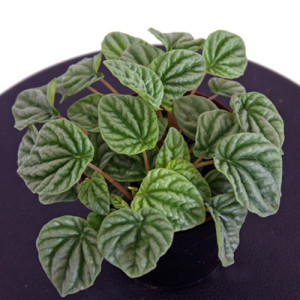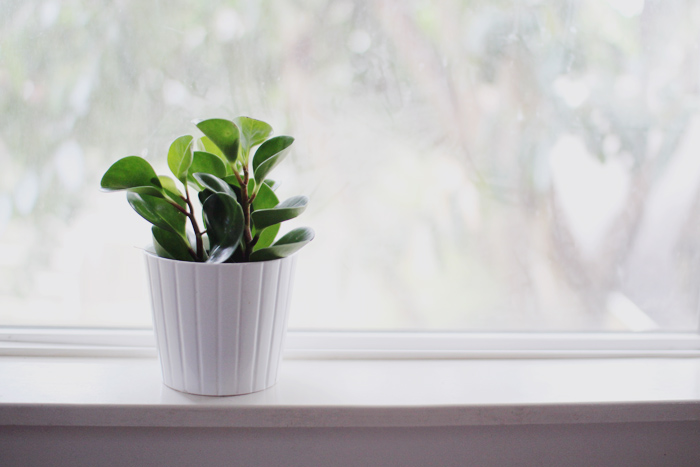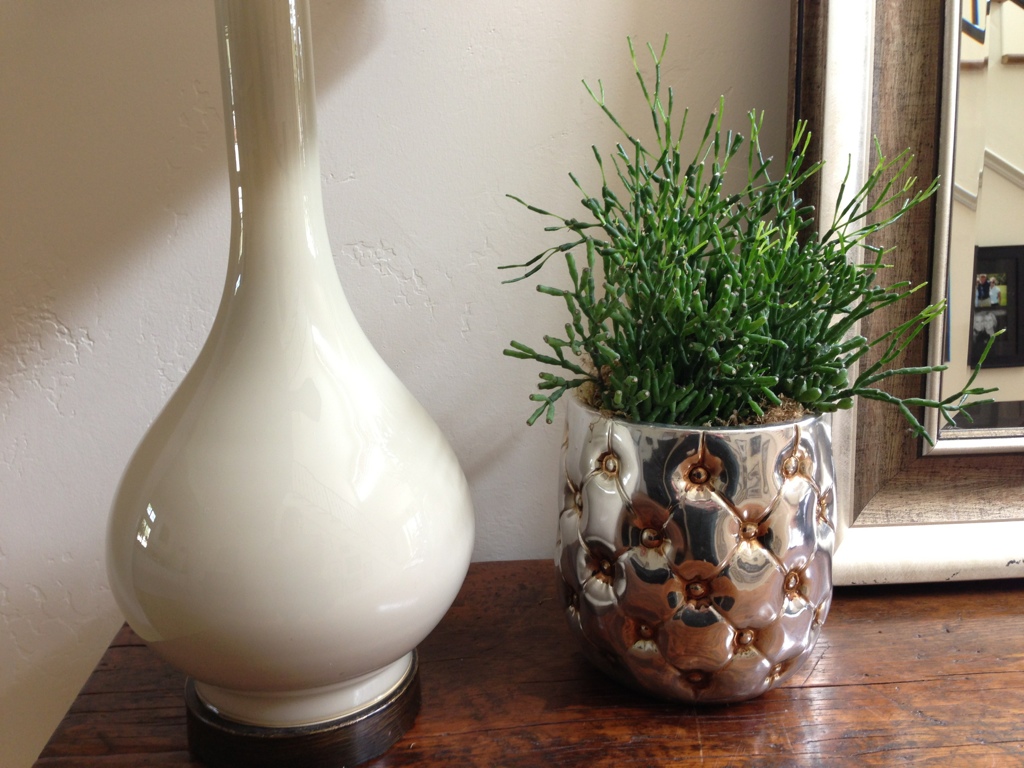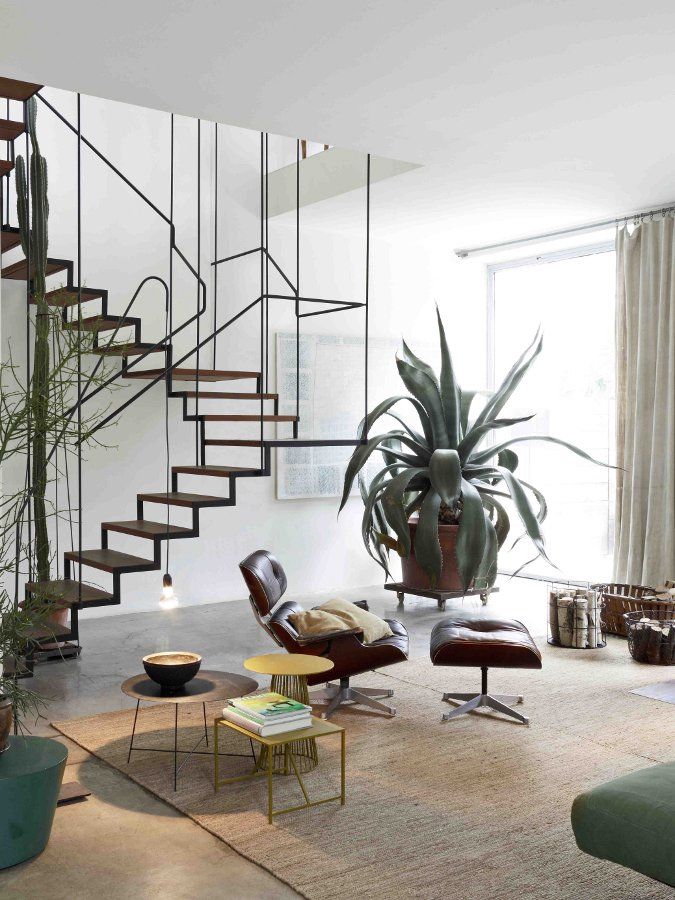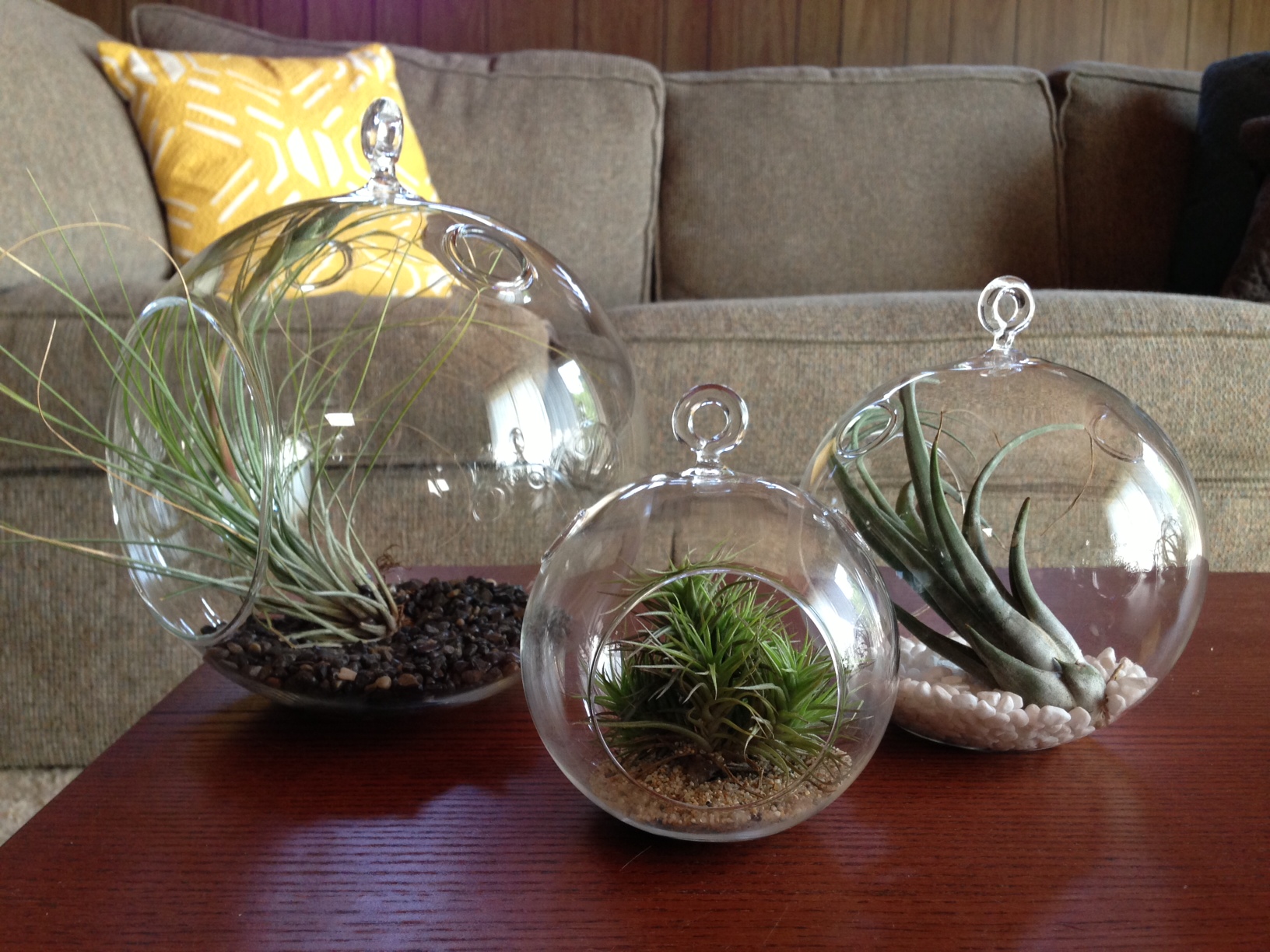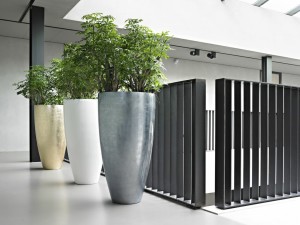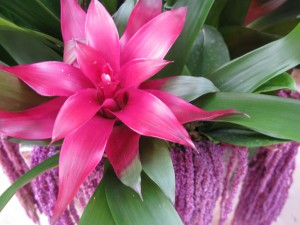Other than the trusty Orchid and trusty Bromeliad plants, clients always ask me what blooming plants we can bring into their homes and offices. Interior spaces typically do not have ideal conditions for most flowering plants, but there are a few that I love. I would recommend trying one or a few of them to see which does best in your indoor space. Most of these plants will live for years if you care from them properly and give them the conditions they need. Some of them will bloom year-round, while others bloom for a season.
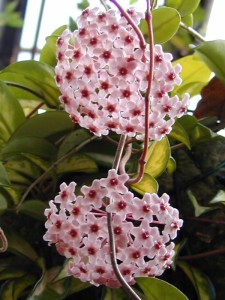 My first Blooming Interior Plant has beautiful green succulent foliage year-round with the bonus of delicate flowers in the spring and/or summer. It is the Hoya Plant. This is by far one of the most interesting of the blooming interior green plants indoors because of it’s glossy succulent leaves and it’s unique flowers. There are many varieties of Hoya Plants, they are also known as Wax Plant or Star Clusters. Some varieties have variegated leaves, some have delicate thin leaves and some even have clusters of hanging branches that resemble rope!
My first Blooming Interior Plant has beautiful green succulent foliage year-round with the bonus of delicate flowers in the spring and/or summer. It is the Hoya Plant. This is by far one of the most interesting of the blooming interior green plants indoors because of it’s glossy succulent leaves and it’s unique flowers. There are many varieties of Hoya Plants, they are also known as Wax Plant or Star Clusters. Some varieties have variegated leaves, some have delicate thin leaves and some even have clusters of hanging branches that resemble rope!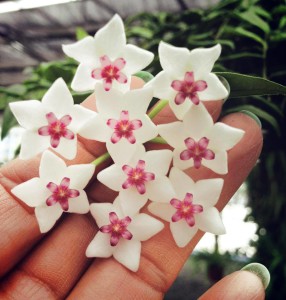
They do great in hanging baskets in bright indirect light or on a shady patio. The flowers only bloom once a year and you won’t want to miss the bloom! They look like little pink candies on an often furry star all clustered together. Probably one of the cutest indoor plants with flowers!
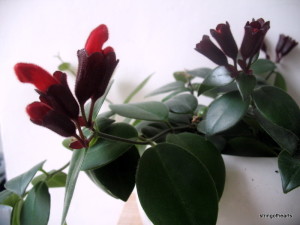 Another Interior Blooming Plant I love is the Lipstick Plant. It’s name is a great descriptor of it’s flowers. When the flowers first emerge they start as a purple lipstick case, then as it matures, you’ll notice the RED LIPSTICK coming out of the center part. It’s definitely one of the coolest blooms I’ve ever seen.
Another Interior Blooming Plant I love is the Lipstick Plant. It’s name is a great descriptor of it’s flowers. When the flowers first emerge they start as a purple lipstick case, then as it matures, you’ll notice the RED LIPSTICK coming out of the center part. It’s definitely one of the coolest blooms I’ve ever seen.
The Lipstick plant does great in a hanging basket or in a bowl on a table where it’s arms can hang down. It loves bright indirect light and blooms typically in the Spring and Summer. I feel especially bonded to this plant because growing up, my Mom had one growing in our bathroom for years and since it had a perfect environment, it seemed like it bloomed year-round!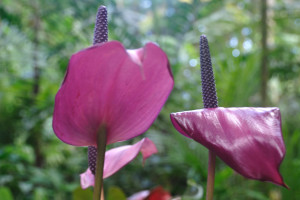
A tried and true blooming plant that seems to last forever is the Anthurium Plant. These beautiful plants sit upright and come in Red, White, Pink and Purple. Florists use them for their long lasting blooms. The leaves and flowers have a glossy, almost waxy sheen. I love finding unusual colors and sometimes I come across flowers with color combinations!
Keep your anthurium on the dry side and give them bright indirect light. I’ve had anthurium plants that live for years and bloom all year!
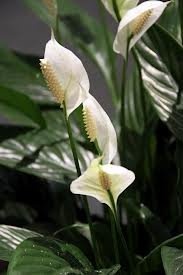 I can’t leave out one of the most common used interior blooming plants on the market, the Spathiphyllum Plant aka Peace Lily. This beautiful blooming plant has dark green glossy foliage and elegant white blooms. It LOVES water and will talk to you if you don’t water it enough!
I can’t leave out one of the most common used interior blooming plants on the market, the Spathiphyllum Plant aka Peace Lily. This beautiful blooming plant has dark green glossy foliage and elegant white blooms. It LOVES water and will talk to you if you don’t water it enough!
Spathiphyllums come in different varieties with different size leaves. Typically, the smaller the leaf, the more blooms you’ll get. So, although the large leaf varieties are gorgeous just for their leaves, if you’re looking for flowers, then choose a variety that has smaller leaves and you’ll get flowers most of the year.
One plant that you really can’t ignore despite that fact that your Grandmother or Mother 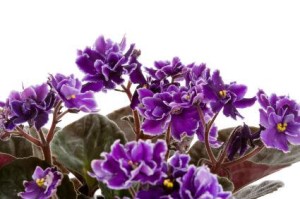 had a collection of them in a bay-window throughout your childhood, is the African Violet Plant. When this plant is happy it blooms all year-round! And you can’t deny that the flowers and furry leaves aren’t adorable. I just love the bright purple varieties.
had a collection of them in a bay-window throughout your childhood, is the African Violet Plant. When this plant is happy it blooms all year-round! And you can’t deny that the flowers and furry leaves aren’t adorable. I just love the bright purple varieties.
African Violets don’t like their leaves wet, so they prefer to be watered from a saucer or self-watering container. They love the morning sun. So find a window that gives good morning sun and they will thrive forever!
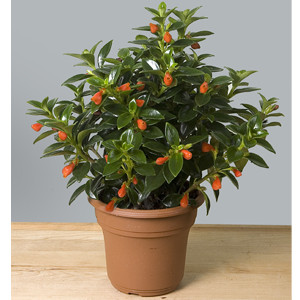 Lastly, a discrete bloomer, the Goldfish Plant. It has small orange flowers year-round! It’s nice to have a plant that blooms consistently with glossy healthy leaves year-round. Many people buy this plant just for the foliage and then the flowers are an extra perk! I love how low maintenance this plant is because although it drops flowers, it’s easy to maintain. Initially it will grow upright, but eventually, the arms will sprawl and crawl.
Lastly, a discrete bloomer, the Goldfish Plant. It has small orange flowers year-round! It’s nice to have a plant that blooms consistently with glossy healthy leaves year-round. Many people buy this plant just for the foliage and then the flowers are an extra perk! I love how low maintenance this plant is because although it drops flowers, it’s easy to maintain. Initially it will grow upright, but eventually, the arms will sprawl and crawl.
What’s your favorite Interior Blooming Plant?
